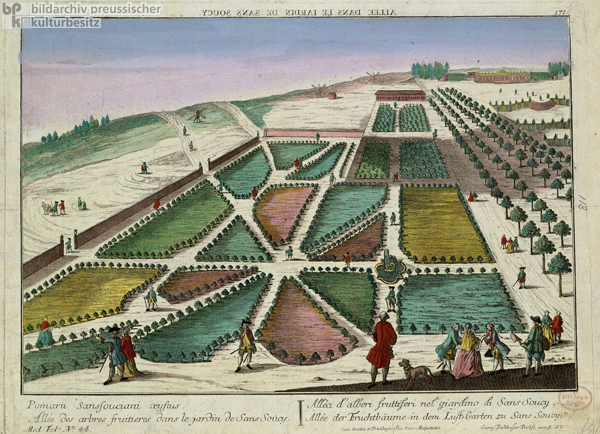













INTRODUCTION | DOCUMENTS | IMAGES | MAPS | EDITOR
|
Sanssouci Palace in Potsdam near Berlin is an outstanding example of Rococo architecture. It was commissioned by Frederick II (“the Great”) (r. 1740-86) and built between 1745 and 1747. Its name means “without worries,” and it served as Frederick’s favorite summer retreat. The grounds include large English parks and gardens in the Italian-French style. The symmetrical orchards and avenues shown here attest to Frederick’s interest in agriculture. During his reign, he promoted improvements in arable farming, initiated land-drainage projects, encouraged potato cultivation, developed an extensive silk industry (based on mulberry tree plantations), and supported improved methods of fruit production. Copperplate engraving by Georg Balthasar Probst (1673-1748), after 1745.
© Bildarchiv Preußischer Kulturbesitz / SBB / Karin Seifert |
 print version
print version return to image list
return to image list previous image
previous image
